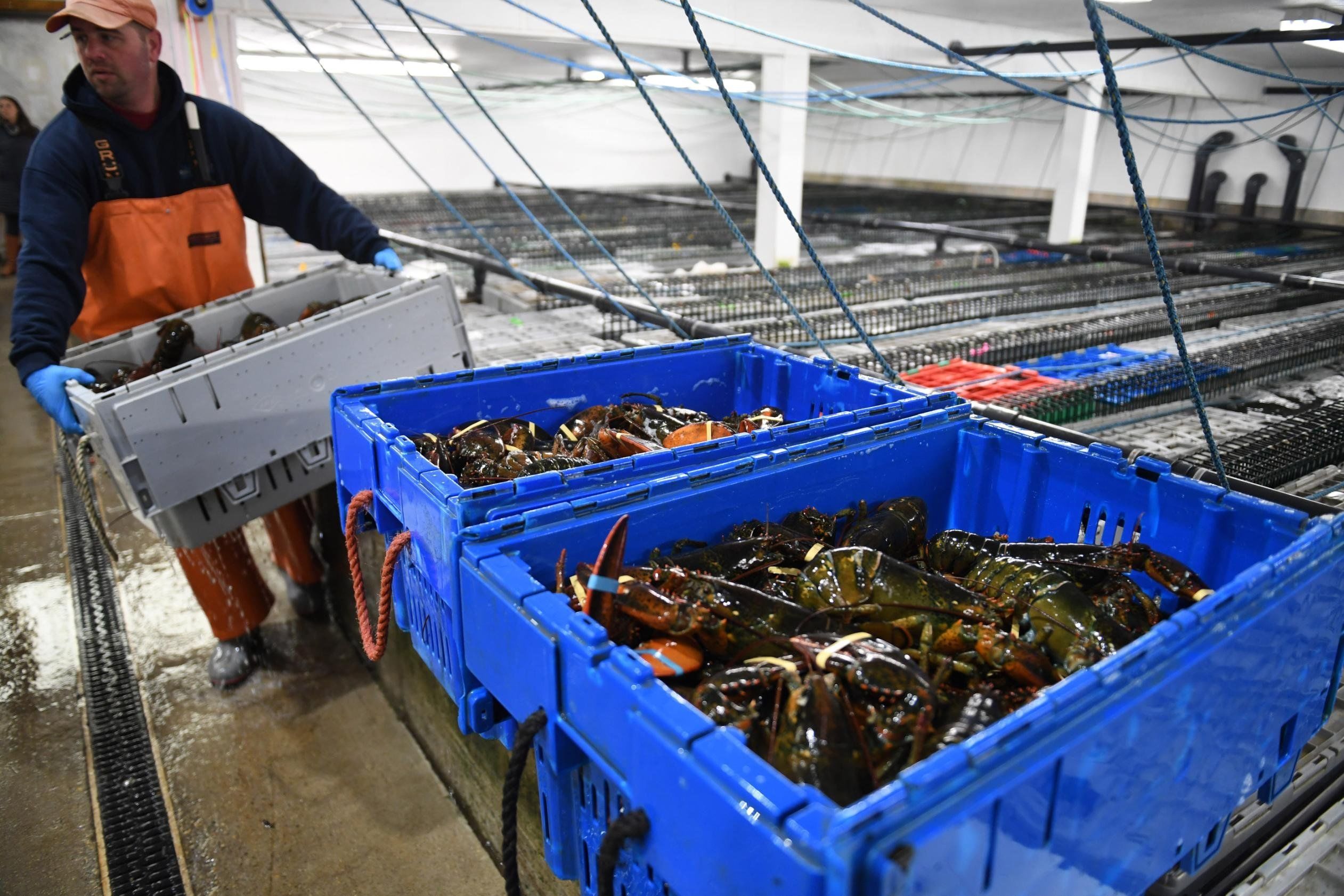
Two years ago, Maine Coast Company was shipping about 2 million pounds of live lobster — worth $12 million — to China annually.
Owner Tom Adams hired salespeople who were familiar with Chinese language and culture to expand the business, one of the biggest sellers of live lobsters in the US. He also decided to put an addition on his facility in York, a small coastal town in southern Maine, to meet the growing demand.
But, at about the same time, President Donald Trump was starting to ramp up his trade war with China, triggering a series of tit-for-tat tariff announcements between Washington and Beijing. China slapped a tariff on US lobsters in July of 2018, and about 20% of Maine Coast’s sales instantly evaporated.
Now, nearly 17 months later, Adams has survived by reinventing the business — a necessity given the continuing uncertainty around trade negotiations. Exports now make up just 40% of Maine Coast’s revenue instead of 60%, thanks to Adams’ decision to zero in on selling to Asian restaurants and supermarkets in the US. It also increased exports to other Asian countries, but those markets aren’t big enough to make up for the loss of Chinese buyers.
Others are still hanging. Farmers in the Midwest were hit especially hard, because China put tariffs on a variety of agricultural products ranging from soybeans and corn to wheat and pork. US manufacturers are paying the tariffs Trump has put on some industrial materials and American importers are facing higher prices for a variety of Chinese-made goods, like TVs, sneakers, and bikes.
A year after promising a 90-day speed negotiation, Trump and Chinese President Xi Jinping have yet to agree to a deal. Additional tariffs on Chinese goods are set to go into effect December 15.
Adams says he’s glad he moved fast on changing his strategy rather than trying to wait out the trade war.
“It’s absolutely made us a better company,” Adams said during a walk through his completed York facility, where lobsters spend a brief time in temperature-controlled water, growing stronger before being packed and shipped. “But I would still choose not to have gone through it.”
How lobsters got caught in the crossfire
Lobsters were one of the first products to get hit with a tariff from China. Until it went into effect, China was Maine’s second biggest customer, buying nearly $129 million worth of lobster in 2017. But exports plunged 84% during the first 11 months after the tariff was imposed, according to the Maine International Trade Center.
While soybean growers and other farmers who have been hit with duties have received billions of dollars in aid from the Trump administration to help them weather the tariffs, lobster sellers were not included in that package.
Trump maintains that his trade war isn’t dragging down the economy. At a speech at the Economic Club of New York earlier this month, he touted strong job numbers, stock market gains, and GDP growth.
“They haven’t been hurt,” Trump said, when asked about economic headwinds affecting a number of industrial sectors.
“The real cost, would be if we did nothing. The cost of doing nothing was killing us, as a country — our national debt and so many other things,” he added.
While the overall economy is strong, the most recent GDP report indicates that it’s slowing. The manufacturing sector, specifically, has slowed for three months in a row.
Maine was one of the slowest growing states during the second quarter of this year. A decrease in trade was the leading contributor, the Bureau of Economic Analysis said.
Along with China, Trump’s other trade fights have also weighed on the lobster industry. Meanwhile, the European Union and Canada struck a trade deal in 2017 that also put Maine lobstermen at a disadvantage.
Despite both hits, sales at Maine Coast Lobster were down just 3% in 2018 — and Adams expects revenue to be up 15% this year. It helped that the lobster catch has been down, keeping prices up.
The trade war will have lasting effects
Yet Adams and his competitors say the Maine industry may never be the same, even if (or when) China lifts tariffs on lobsters. Some Chinese customers may come back, but some are likely to stick with their new suppliers.
“It’s changed the game,” said Hugh Reynolds, the owner of Greenhead Lobster, located in Stonington, about four hours up the coast. The tariffs accelerated his decision to open up a new processing facility, helping broaden his offerings for American buyers with new products, including frozen tails. It began operating in September.
But he said the biggest winner of the lobster war, ironically, might be a country that’s not even involved: Canada. Its sales to China have more than doubled since the tariff was put on US lobsters, according to data from the Lobster Council of Canada.
“So much business has gone to the Canadian supply chain, it’s going to be hard to get back to where we were in 2016,” Reynolds said.







